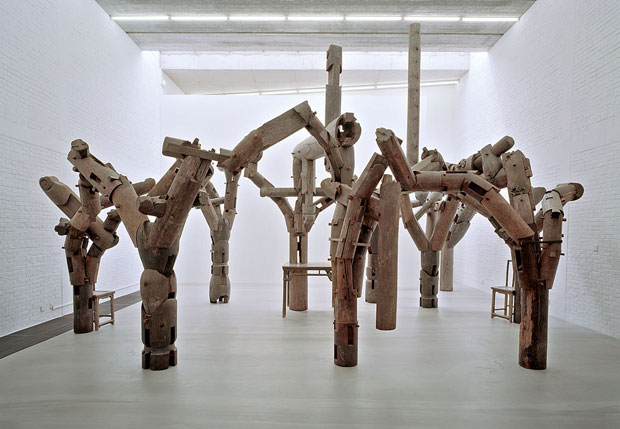
Ai Weiwei's Fragments in the US for the first time
Tradition and 21st century Chinese life come together at the Sackler Gallery, Washington
In China, making room for both tradition and the realities of 21st century life is an ongoing, often fraught, process. Not surprisingly, the country’s most important artist, Ai Weiwei, is usually to be found documenting the uneasy relationship between the two – usually with a political dimension (however carefully buried) and often, as we know, with serious consequences for the artist.
Fragments, a piece within a new show called Perspectives at the Smithsonian’s Sackler Gallery in Washington highlights that relationship. On view in the US for the first time, it’s a delicately balanced network of ironwood pillars and beams from dismantled temples. Ai worked with a team of Chinese carpenters on the project. Based on the traditional Chinese “post and beam” construction, the installation is held together by an elaborate system of joiners whose seemingly random posts anchor a scaled outline of China. By using salvaged materials then reimagining them in different form, the piece highlights the simultaneous destructive and creative process at work in China right now.
“It reminds us that our relationship to the past and notions of heritage is fluid and complex,” says Carol Huh, curator of the Perspectives series. “The Ironwood began life hundreds of years ago. Ai has bought these disassembled pieces together in a new context, as if defining another stage in the evolution of this ancient material.”
Perspectives runs at the Smithsonian’s Arthur M Sackler Gallery until April 12, 2013. The show also features three Ai Weiwei video-related projects: Beijing: Chang'an Boulevard (2004), Beijing: The Second Ring (2005), and Beijing: The Third Ring (2005) depicting his travels around Beijing’s ring roads and Chang’an Boulevard. Check out our Ai Weiwei monograph in the Phaidon store.